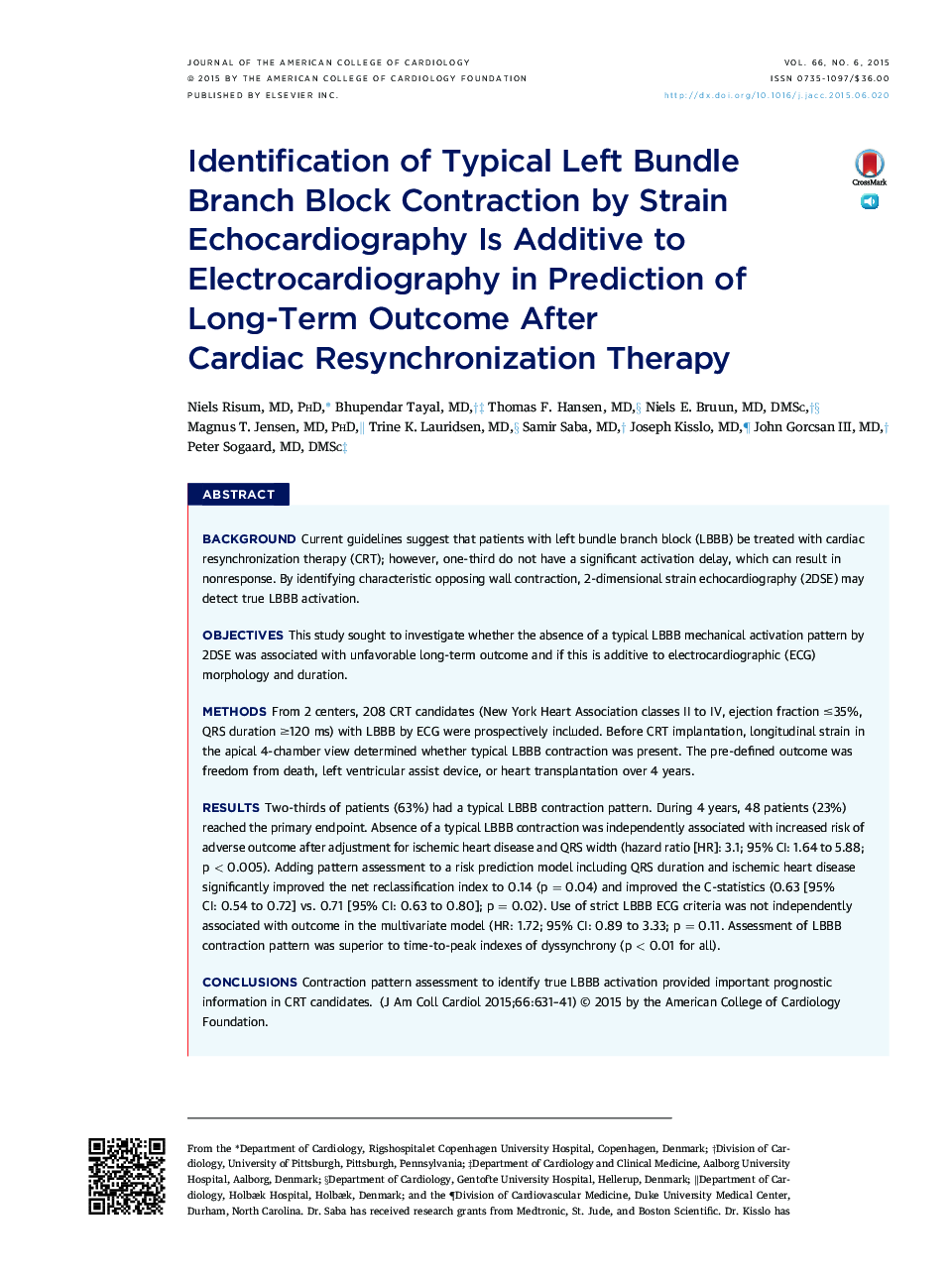| Article ID | Journal | Published Year | Pages | File Type |
|---|---|---|---|---|
| 2943688 | Journal of the American College of Cardiology | 2015 | 11 Pages |
BackgroundCurrent guidelines suggest that patients with left bundle branch block (LBBB) be treated with cardiac resynchronization therapy (CRT); however, one-third do not have a significant activation delay, which can result in nonresponse. By identifying characteristic opposing wall contraction, 2-dimensional strain echocardiography (2DSE) may detect true LBBB activation.ObjectivesThis study sought to investigate whether the absence of a typical LBBB mechanical activation pattern by 2DSE was associated with unfavorable long-term outcome and if this is additive to electrocardiographic (ECG) morphology and duration.MethodsFrom 2 centers, 208 CRT candidates (New York Heart Association classes II to IV, ejection fraction ≤35%, QRS duration ≥120 ms) with LBBB by ECG were prospectively included. Before CRT implantation, longitudinal strain in the apical 4-chamber view determined whether typical LBBB contraction was present. The pre-defined outcome was freedom from death, left ventricular assist device, or heart transplantation over 4 years.ResultsTwo-thirds of patients (63%) had a typical LBBB contraction pattern. During 4 years, 48 patients (23%) reached the primary endpoint. Absence of a typical LBBB contraction was independently associated with increased risk of adverse outcome after adjustment for ischemic heart disease and QRS width (hazard ratio [HR]: 3.1; 95% CI: 1.64 to 5.88; p < 0.005). Adding pattern assessment to a risk prediction model including QRS duration and ischemic heart disease significantly improved the net reclassification index to 0.14 (p = 0.04) and improved the C-statistics (0.63 [95% CI: 0.54 to 0.72] vs. 0.71 [95% CI: 0.63 to 0.80]; p = 0.02). Use of strict LBBB ECG criteria was not independently associated with outcome in the multivariate model (HR: 1.72; 95% CI: 0.89 to 3.33; p = 0.11. Assessment of LBBB contraction pattern was superior to time-to-peak indexes of dyssynchrony (p < 0.01 for all).ConclusionsContraction pattern assessment to identify true LBBB activation provided important prognostic information in CRT candidates.
